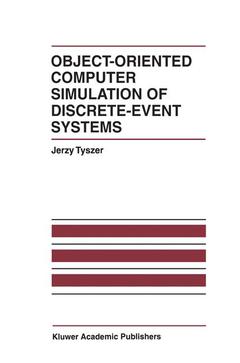Object-Oriented Computer Simulation of Discrete-Event Systems, 1999 The International Series on Discrete Event Dynamic Systems Series, Vol. 10
Auteur : Tyszer Jerzy

Object-Oriented Computer Simulation of Discrete-Event Systems demonstrates the basic and generic concepts used in computer simulation of discrete-event systems in a comprehensive, uniform and self-contained manner.
Date de parution : 10-2012
Ouvrage de 258 p.
15.5x23.5 cm
Disponible chez l'éditeur (délai d'approvisionnement : 15 jours).
Prix indicatif 242,64 €
Ajouter au panierThèmes d’Object-Oriented Computer Simulation of Discrete-Event... :
Mots-clés :
Simulation; computer; computer simulation; probability; programming; scheduling; statistics



